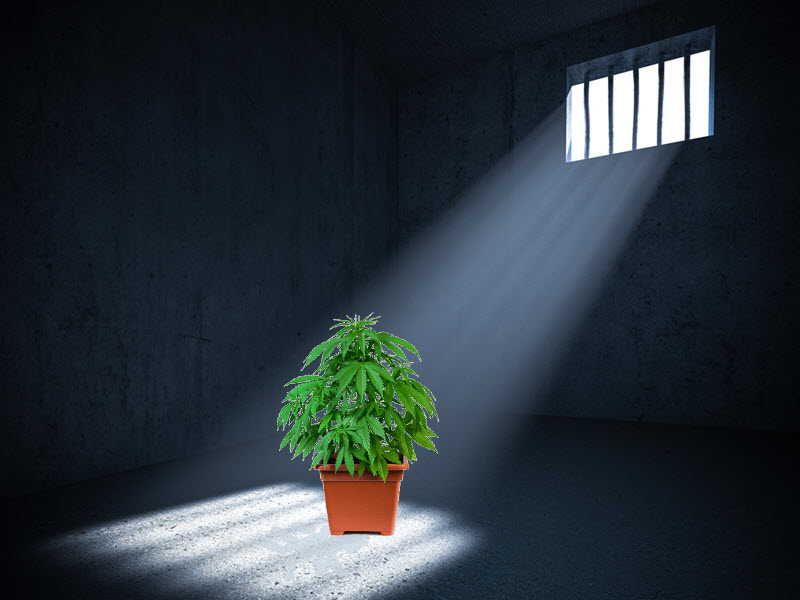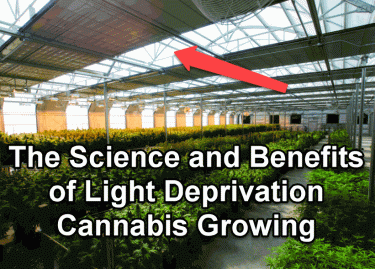
Light Deprivation Crops Explained – How To Grow Your Own Low-Tech Marijuana!
Today we’re talking about maximizing cannabis production for year-round growing. This term may be “new” to cultivators, but the technique is very common.
As a cannabis writer and breeder, I have long understood that periods of light play a critical role in the transition of cannabis from vegetative to flowering, but the term “dep crops” or “light dep crops” only came to my attention recently.
At first I thought, “Is this a new and amazing technique that I haven’t heard of?” and as I investigated further, I found that it was a mixture of both.
In this article, we’re going to take a closer look at “light dep crops” and examine the different “Grows” levels available.
If you are a home grower, unless you are harvesting according to the season, you are growing “light” plants right now.
Another reason I speak about Light Dep Crops is because it is causing problems in places like California where cannabis overproduction is currently plaguing smallholder farmers.
The basics of growing cannabis – but on a company level!
Plants like cannabis are extremely sensitive to light. This gives growers the ability to get cannabis plants to flower much faster. Where outdoor farmers have one main crop per year, Light Dep Crops can have up to four main crops per year.
I talked about creating a “conveyor belt” system years ago that would allow you to harvest small crops every month if you schedule it properly. It takes about six months to establish the cycle, but with proper planning, you can easily get a monthly harvest.
Many of these Light Dep Farms are emerging in California, reducing the cost per pound.
It is these thin margins that are causing problems for traditional outdoor cannabis farmers.
So what are these light dep farms? Essentially, these are controlled cannabis growing facilities where the light cycles are artificially manipulated to speed up the harvest cycles.
As I said – nothing “new” except maybe the term related to cannabis plants. As for light cycles, it’s easy. 18-24 hours of light for vegetative and 12 hours for flowering.
Different types of light dep cultivation
Let’s start with a low-tech approach first. One of the most accessible Light Dep growing areas you can get is the “Hoop Houses”.
These are usually built using PVC pipes, rebar, and a little bit of wooden planks. Then a thick black tarpaulin is draped over the structure. This allows you to control the lights, but you still have to manually move the tarpaulin.
Obviously this wouldn’t make much sense on a commercial scale, but for home cultivators who want to take advantage of sunlight but also have the ability to play around with the light cycles, this is an excellent choice.
However, one problem is durability. Tire houses are known for having to be fixed frequently, so if you are planning multiple cutouts you may need something “sturdier”.
Entry-level greenhouses
The next stage is your typical greenhouse. These can be bought and require some assembly, but are far more stable than a tire house.
If you were to spend more on materials at your hooped house, you could suit this design pretty well. There are many different models and this can be a great approach to growing depending on your budget.
Again, there is a manual aspect – that is, if you don’t install your own lighting system, you will still have to manually block the sun.
Nonetheless, you could start with a basic structure and spice it up over time.
Fully automated penal houses
This is what the industry typically uses. A fully developed growhouse with automatic lighting, heating, water, etc.
While this produces some of the best weeds, considering you are in full control of all of the elements in the growhouse, it is also the most energy dependent.
Nonetheless, these engineering marvels are tailored to your specific growing location, meaning when you do get snow they are built to withstand the cold and maximize heat retention.
This is the best automated solution for industrial growing.
Wait a minute … what about grow tents?
If you are a breeder you know “light deprivation” and many of you have built your own grows. In fact, grow tents are exactly the same thing – just for individual growing.
The thing is, if you understand the principles of growing cannabis – you can convert any area into a “lack of light” room and use technologies like Arduino and Raspberry Pi to automate all of your processes and connect them to your phone.
A business opportunity
As cannabis becomes more commercial every day, the demand for these “light deprivation growhouses” will increase. If you know how to connect things together, how to properly isolate and water, you can make a lot of money as an engineer doing these types of ventures.
There will be an increasing demand for people with these special skills. So, if you’re looking for a cannabis-related market to get into – this could be it!
The sticky end result
It’s always funny for me when I read things that make me scratch my head only to realize I’ve known it for a long time. Light Dep Crops – something you are sure to hear more about in the near future – is just a regular old cannabis plant grown in a controlled environment.
Still, with the increasing interest in these growth options, there are many opportunities in the market to establish your brand.
If you build it … they will grow!
READ MORE ABOUT LIGHT DEPRIVATION ..

LIGHT DEPRIVATION GROWING, HOW DOES IT WORK? CLICK HERE.
OR..

WHAT IS THE 12 12 GROWTH TECHNIQUE? READ THIS!

Post a comment: